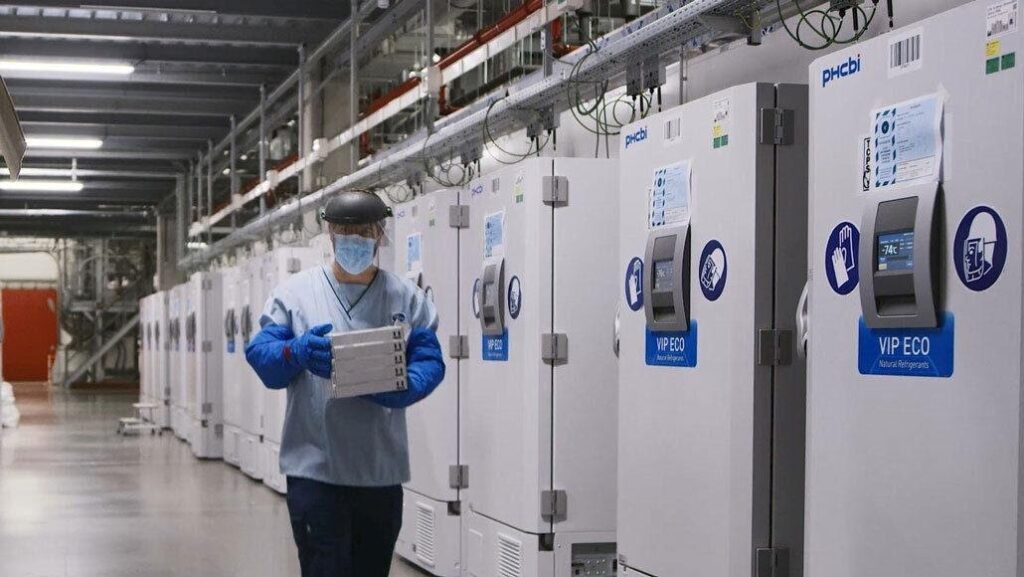The number of medicines that require a specific temperature regime during transportation, storage, and handling has increased dramatically in recent years. The majority of them are biological products, which need a temperature range of +2 to +8 degrees for storage, with the ideal temperature being +5 degrees. Click here https://q1scientific.com/the-importance-of-vaccine-cold-chain-logistics/ to find out more on this topic.
The effect of the external environment impacts both the performance and the protection of the product for the end consumer. As a result, all parties in the logistics chain, including the manufacturer, transporter, warehouse operator, and pharmacist, must adhere to the temperature regime’s specifications according to strict rules.
What exactly is a cold chain?
The market potential determines the pharmaceutical industry’s particular interest in the problems of cold chains in recent years. Since substantial efforts are made to maintain temperature conditions in the supply chain, it is the driving force behind the growth of both cold chains and the entire logistics market; from the raw material producer to the hospital and then to the patient as the final customer.
The following elements of the cold chain structure can be differentiated:
Vehicles that are isothermal. This should include all vehicles (road, rail, container, sea, river, and air) that ensure drug transportation in accordance with the appropriate temperature regime. Different thermal containers and medical cooler bags should also be included in this category.
Refrigerators that are permanently mounted or stationary refrigerators. All types of refrigerators used in the storage of medicinal products are included in this category: processing, storage, reloading, distribution, and sales. Refrigerating chambers and freezers are also part of this category in the cold chain system.
Auxiliary devices. Thermal sensors, temperature recorders, thermographs, thermometers, and other devices are used to monitor the temperature regime and ensure the proper operation of refrigeration equipment and vehicles. Click here for more information.
Suppose there is documented proof of a breach of the temperature regime for storing medicinal goods. In that case, the responsible employee must report the violation to the leader and draw up an acceptable act when receiving the cargo at all stages of the cold chain. The organization’s leader can choose to refuse the products and send them back for a second standard inspection.
What rules are crucial for the proper storage of medicinal goods?
Standard vaccine storage conditions are usually maintained using high-quality, mains-powered refrigerators. The upper chamber, or freezer, is where refrigerants are frozen and stored, while the lower chamber, or cold chamber, is where vaccines are kept.
Refrigerators should be located in a different, well-ventilated zone away from heat sources, including radiators. It is appropriate to use a particular level to inspect the refrigerator installation. For proper air circulation, the refrigerator should be installed at least 10 centimeters away from the wall.
The refrigerator should be connected to a wall outlet so that it maintains a secure connection and prevents the refrigerator from being accidentally turned off. The refrigerator can now be turned on after these measures have been completed.
The installation of the thermostat is the next step. This is done with the aid of a thermometer. Thermometers come in a variety of shapes and sizes. It is recommended that two thermometers be mounted, one at the top and one at the bottom of the refrigerator. The temperature at which vaccines are stored must be maintained between +2 and +8 degrees Celsius at all times.
Before putting the vaccine in the refrigerator, there are two steps to follow. Refrigerants should be stored in the fridge. Place them on their sides so that air can circulate freely between them. Filling the freezer with refrigerants at room temperature is not a good idea. To prevent a temperature rise in the refrigerator compartment, position them progressively.
The compartment’s bottom should be filled with containers filled with 5-7 liters of water. This water is not for drinking. It must be kept in the refrigerator compartment at all times to provide a backup supply of cold stream in the event of a power failure or repeated refrigerator door opening. If you want to know more about cold chain storage, you can do some research online.
In most cases, the effect of adverse environmental factors (temperature, radiation, etc.) on a vaccine cannot be seen. In some instances, the appearance of the vaccine will not change whether it loses any or all of its activity. Only a professional laboratory with the required equipment may offer an opinion on a vaccine’s suitability for use.
According to specialists, the next step in the evolution of global cold chain operation will be to equip each dose of vaccine with a miniature electronic thermal detector that will be included in the package and enabled by the vaccine producer during the manufacturing phase.



